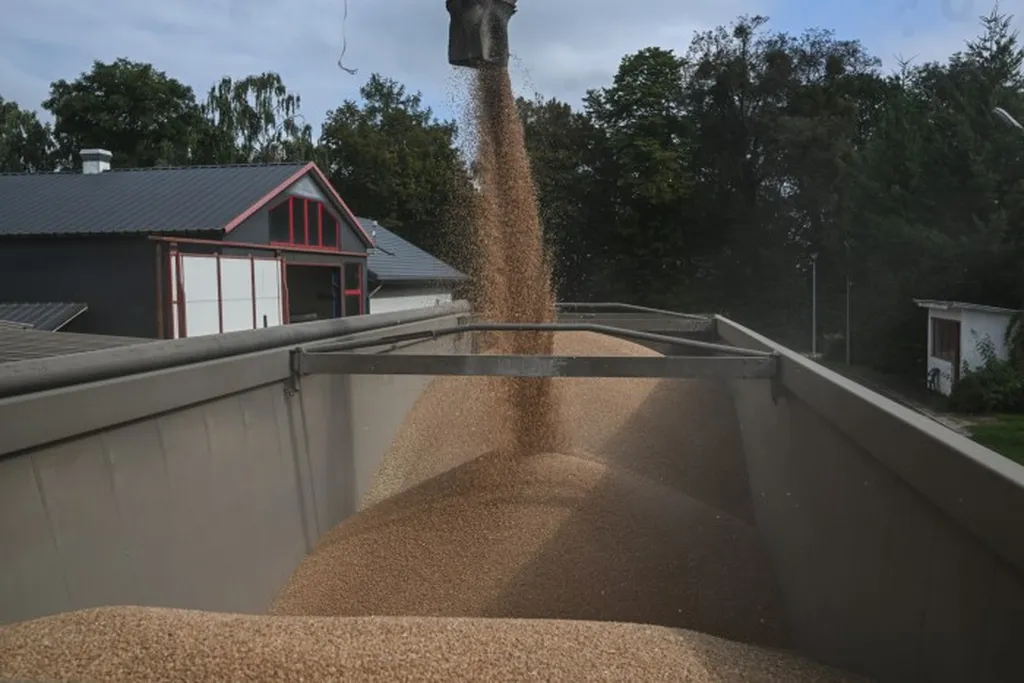In the quest for sustainable agriculture, a recent study published in *Scientific Reports* has shed light on the potential of biostimulants to enhance wheat productivity and water use efficiency, offering a promising alternative to synthetic fertilizers. The research, led by David Tavi Agbor from the Faculty of Agriculture at Ondokuz Mayıs University, explores the effects of two biostimulants, ekofertile and microfertile, on wheat growth under controlled greenhouse conditions.
The study employed a split-plot experimental design, incorporating two biostimulants and five treatment levels, including a control and inorganic fertilization. The results revealed that ekofertile significantly outperformed microfertile in terms of tillering and total chlorophyll content, which is a crucial indicator of photosynthetic activity. “The 10% treatment level of ekofertile showed the highest significant tillering and stem elongation, with total chlorophyll content reaching 3.05 and 3.02 mg/g, respectively,” noted Agbor. This enhanced photosynthetic activity is a key factor in improving overall plant health and productivity.
In terms of grain yield, ekofertile again proved superior, with a yield of 9.4 t ha⁻¹ compared to microfertile’s 8.8 t ha⁻¹. The 10% treatment level yielded the highest grain production at 10.4 t ha⁻¹. Water use efficiency (WUE) was also higher under ekofertile, with a notable WUE of 3,279 g mL⁻¹ compared to microfertile’s 2,928 g mL⁻¹. The 10% treatment level achieved the highest WUE at 3553 g mL⁻¹.
These findings have significant implications for the agriculture sector, particularly in the context of sustainable farming practices. As the world grapples with the environmental impacts of synthetic agrochemicals, the use of biostimulants like ekofertile and microfertile offers a viable and eco-friendly alternative. “Our results highlight the potential of these biostimulants in enhancing wheat productivity at appropriate treatment levels,” Agbor explained. “This could make them a valuable tool for farmers looking to improve their yields while minimizing their environmental footprint.”
The commercial impact of this research could be substantial. As the demand for sustainable agricultural practices grows, the market for biostimulants is expected to expand. Farmers and agricultural companies may increasingly turn to these biostimulants to meet both productivity and environmental goals. Furthermore, the study’s findings could pave the way for further research into the use of biostimulants in other crops, potentially revolutionizing the way we approach plant nutrition and growth.
In the broader context, this research aligns with the global push towards sustainable agriculture. By reducing reliance on synthetic fertilizers, farmers can mitigate environmental damage, improve soil health, and contribute to long-term agricultural sustainability. The study’s emphasis on water use efficiency is particularly relevant in the face of climate change, as water scarcity becomes an increasingly pressing issue.
As the agricultural sector continues to evolve, the integration of biostimulants like ekofertile and microfertile could play a pivotal role in shaping the future of farming. The research conducted by Agbor and his team provides a compelling case for the adoption of these biostimulants, offering a glimpse into a more sustainable and productive agricultural future.

